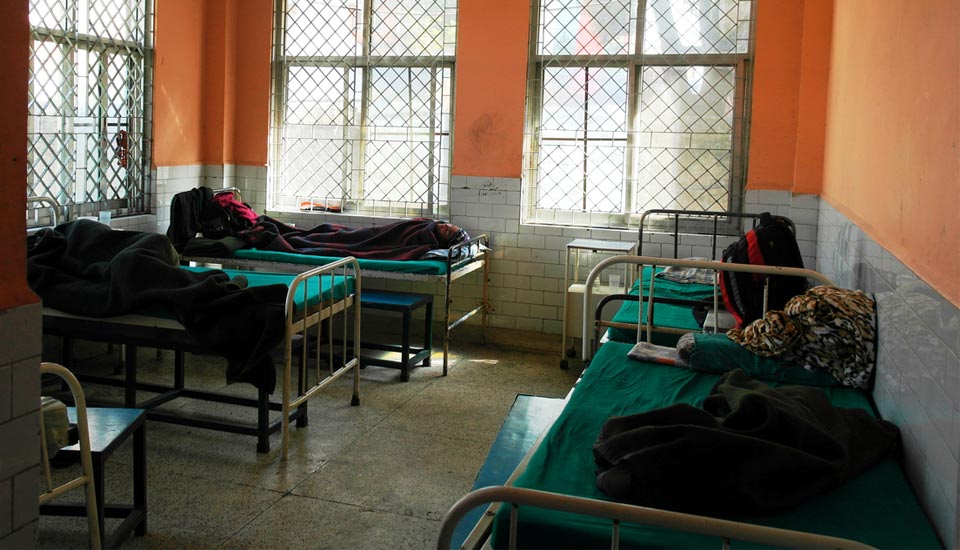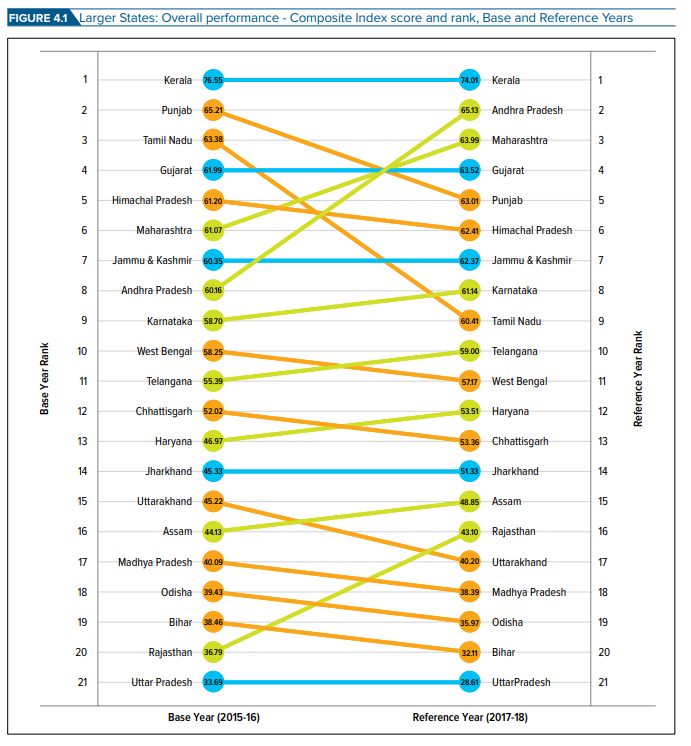
Niti Aayog points at falling health of Indian healthcare

India’s think tank Niti Aayog on Tuesday (June 25) released health index scores for states, naming Kerala as the one with the best health parameters. While Kerala’s rank was along the expected lines, individual performances of states raise concerns about the country’s healthcare system.
Niti Aayog’s health index scores indicates that two-thirds of the 36 states and Union Territories have either reported a decline in their health index scores or showed no improvement at all.
- The Health Index score: list of key indicators
- Neonatal Mortality Rate
- Under-five Mortality Rate
- Total Fertility Rate
- Proportion of Low Birth Weight (LBW) among newborns
- Sex Ratio at Birth
- Full immunization coverage
- Proportion of institutional deliveries
- Total case notification rate of tuberculosis (TB)
- Proportion of vacant health care provider positions
- Proportion of total staff
This means that the quality of healthcare facilities provided by the government hospitals in 24 of these states have either declined or remained the same over the past two years. The healthcare facilities in only 12 states showed an improvement. Ten of these states are ruled by the BJP.
Decline in ranking
Among the 21 larger states, which are expected to spend more on healthcare facilities, only seven states improved their rankings from 2015-16 (base year) to 2017-18 (reference year). These include Andhra Pradesh, Maharashtra, Karnataka, Telangana, Haryana, Assam and Rajasthan. Nine states observed a decline in their ranking position whereas the rankings of Kerala, Gujarat, Jammu and Kashmir, Jharkhand remained unchanged.
Uttar Pradesh showed no improvement in its healthcare facilities and remained the worst performing state.

A similar trend in seen even in the Northeastern states, which already have limited healthcare facilities due to geographical locations, lack of private investments, internal conflict and misappropriation of development funds. While Tripura improved its rankings, Mizoram, Manipur, Meghalaya and Nagaland retained their health index scores, indicating no improvement. Ranks of Sikkim and Arunachal Pradesh dropped which means the existing healthcare facilities have worsened.
In the case of Union Territories (UTs), the rankings changed completely in the reference year compared to the base year. While Chandigarh, Dadra and Nagar Haveli, and Puducherry improved their rankings, the remaining UTs including the national capital Delhi dropped in the ranking.
Also read: Govt apathy is the epidemic that’s killing Bihar children
Poor performance
States’ performance in a number of indicators such as infant mortality rate (IMR) saw a decline. An IMR refers to the number of deaths per thousand live births in the first year of a child’s life. It is considered a good health indicator as it is generally accepted that where infant mortality rates are high, health standard of all segments of the population are likely to be low.
States such as Odisha, Madhya Pradesh and Uttar Pradesh have a high IMR of 35, 34 and 31, respectively. The margin of difference within states’ IMR is huge as a state like Kerala has an IMR of 6, as per Niti Aayog. Even though Kerala has the lowest IMR in India, it has not been able to bring it down further in the past two years. Developed countries such as the US, Cuba, Australia and Germany have IMR of 5.8, 4, 3 and 3, respectively.
Overall, India’s infant mortality rate stands at 34. This means that even today 34 children in every 1,000 live child births die in the first year of their lives.
Also read: Kerala best state on health parameters, UP worst: NITI Aayog
Slowdown in growth
Apart from IMR, states have shown improvement in only some of the 23 such indicators including proportion of low birth weight at birth, and immunisation coverage. If we look at larger states only Andhra Pradesh, Jharkhand, Rajasthan, Gujarat, Jammu and Kashmir, Haryana, Telangana and Madhya Pradesh showed improvement in 50 per cent of the indicators. The remaining 12 states showed improvement in less then 15 indicators with Bihar recording the highest number (16) of indicators that have ‘deteriorated’.
The rate of improvement was low among the smaller states with Arunachal Pradesh and Tripura improving on twelve indicators, whereas Nagaland on five. Other smaller states made improvements in less than 46 per cent of the indicators. Even in the case of Delhi, improvement in healthcare facilities was recorded only in nine indicators.
Kerala, which is considered a model state for healthcare as it has traditionally been ahead of other states in terms of health indicators, showed a decline in performance in sex ratio at birth and low birth weight among newborns.
Thus, the declining performances of states in these indicators are sending another warning signal about India’s ailing healthcare system.


